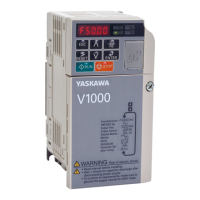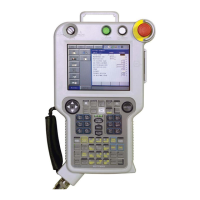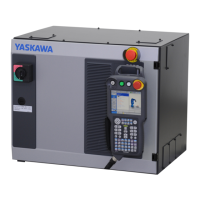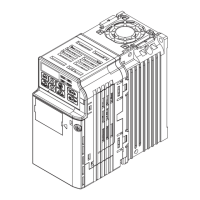u
Ground Fault Circuit Interrupter (GFCI) Trips During Run
Cause Possible Solutions
Excessive leakage current trips GFCI.
• Check the wiring and rating of peripheral devices.
• Increase the GFCI sensitivity or use GFCI with a higher threshold.
• Lower the carrier frequency (C6-02).
• Reduce the length of the cable used between the drive and the motor.
• Disable the internal EMC filter.
u
Connected Machinery Vibrates When Motor Rotates
n
Unexpected Noise from Connected Machinery
Cause Possible Solutions
The carrier frequency is at the resonant frequency of
the connected machinery.
Adjust the carrier frequency using parameters C6-02 through C6-05.
The drive output frequency is the same as the resonant
frequency of the connected machinery.
• Adjust the parameters used for the Jump Frequency function (d3-01 through d3-04) to skip the
problem-causing bandwidth.
• Place the motor on a rubber pad to reduce vibration.
Note: Set C6-02 to a value between 1 and 4 and check the motor to inspect for a motor error.
n
Oscillation or Hunting
Cause Possible Solutions
Insufficient tuning.
Perform Auto-Tuning.
Refer to Motor Performance Fine-Tuning on page 356.
Gain is too low when using PID control. Refer to b5: PID Control on page 206 for details.
The frequency reference is assigned to an external
source and the signal is noisy.
• Ensure that noise is not affecting the signal lines.
• Separate main circuit wiring and control circuit wiring.
• Use twisted-pair cables or shielded wiring for the control circuit.
• Increase the analog input time filter constant (H3-13).
The cable between the drive and motor is too long.
• Perform Auto-Tuning.
• Reduce the length of the cable.
u
PID Output Fault
Cause Possible Solutions
No PID feedback input.
• Check the multi-function analog input terminal settings.
• Set multi-function analog input terminal A1, A2, or A3 for PID feedback (H3-02, H3-10, or
H3-06 = B).
• A signal input to the terminal selection for PID feedback is needed.
• Check the connection of the feedback signal.
• Check the various PID-related parameter settings.
• No PID feedback input to the terminal causes the value detected to be 0, causing a PID fault
and the drive to operate at max frequency.
The level of detection and the target value do not
correspond with each other.
• PID control keeps the difference between target and detection values at 0. Set the input level
for the values relative to one another.
• Use analog input gains H3-03, H3-07, and H3-11 to adjust PID target and feedback signal
scaling.
Reverse drive output frequency and speed detection.
When output frequency rises, the sensor detects a
speed decrease.
Set PID output for reverse characteristics (b5-09 = 1).
Adjustment made to PID parameter settings are
insufficient.
Refer to b5: PID Control on page 206 for details.
6.10 Troubleshooting without Fault Display
YASKAWA ELECTRIC SIEP C710636 04D U1000 Industrial MATRIX Drive Technical Manual
411
6
Troubleshooting

